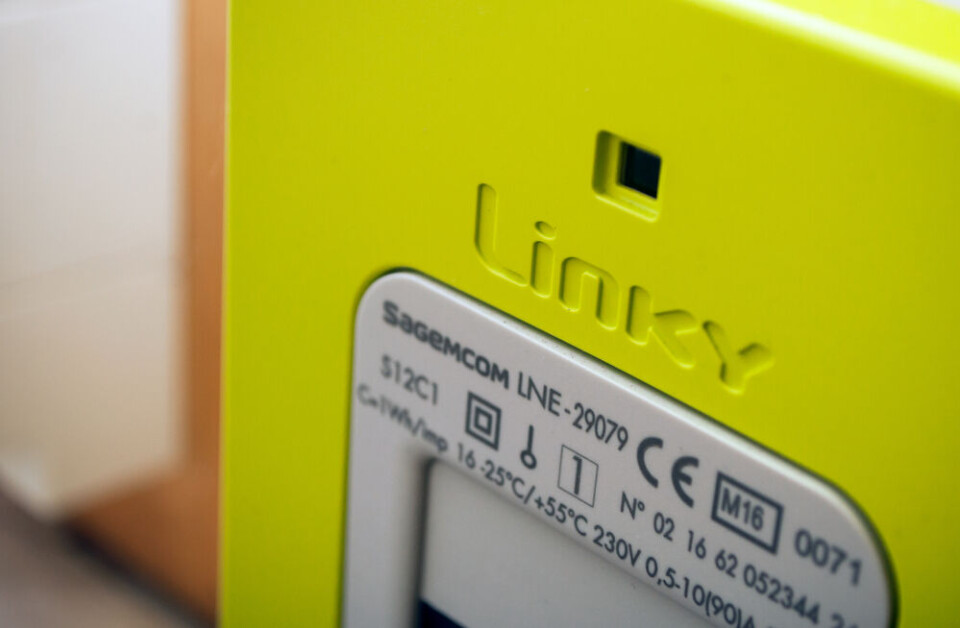-
Warnings issued over connecting to public WiFi networks in France
Lack of encryption and risk of connecting to ‘fake networks’ leave users at risk of hacking attempts
-
France impacted by EU approval for €3 tax on small parcels from outside the union
Tax could coincide with separate French fees for parcels says Finance Ministry
-
Winegrowers outraged by €0.01 bottle of wine in French supermarket
Lidl claims labelling error but local farmers’ union says it threatens local production
Homes in France set to have power reduced via Linky: where and when?
The trial will test how the electricity network could be affected in the event of high demand to avoid the risk of a blackout

More than 200,000 homes in France are to have their power reduced automatically at peak times - via their Linky smart meter - in a new trial.
The aim is to see if this could be a viable solution to help the network during times of high demand and to thus avoid a blackout.
A Linky smart meter is the relatively new fluorescent green-yellow electricity meter now used in most homes in France.
Where and when will the power reduction happen?
The department of Puy-de-Dôme (Auvergne-Rhône-Alpes) has been selected to test the new ‘power limiting’ system this winter (2023-2024).
The trial is set to take place before March 31, 2024, after being submitted for final consideration by the energy authority, le Conseil supérieur de l'énergie on December 21.
An exact date for the test to begin has not yet been confirmed.
Read more: More about how proposed electricity cuts will work in France
What will happen and why?
The new plan will see the properties’ power automatically reduced for two hours a day, while still providing enough to “guarantee that lighting and key equipment (fridge, freezer, phone charging) can be maintained for two hours in a given area,” said the ministry of energy transition.
Electrical power will be reduced to 3 kVA for two hours, “on a working day between 6.30 and 7.30, or between 17.30 and 20:30”, the ministerial text states.
Limitations to the kVA available to households will mean that some higher power devices, such as electric radiators and tumble dryers, may not work, particularly when used at the same time.
The goal of the experiment is to see how and if it helps the electricity network in the event of high demand, to avoid the risk of a blackout on the grid.
Read also: How compensation for electricity power cuts works in France
Why Puy-de-Dôme?
The ministry said that Puy-de-Dôme was chosen because it is large enough to have a group of 200,000 homes that span a range of different types of property: rural, urban, cold in winter, and enough homes heated by electricity.
Residents will be paid €10 in compensation for each period of kVA limitation in the trial, but they will also be allowed to refuse to take part. They will be advised of the change by letter, at least 22 days (three weeks) in advance.
People who are considered to be vulnerable or at high medical risk - for example, those who need power for health equipment or treatment - will not be among those asked to take part.
Read also: Does insurance cover food in fridge ruined after power cut in France?
Blackout avoidance
If the experiment is considered to be successful, ‘power limiting’ will become a tool that the electricity network providers can use as a last resort in order to avoid a blackout in the event of too-high demand in future.
Blackouts are not common on the French power network, but in the winter of 2022, fears arose that it could happen due to a lack of power production as a result of a high number of nuclear power stations being offline for repairs and maintenance.
Read our previous article: France sets out its strategy for winter power cuts to homes
The feared power cuts did not happen, but France has still been considering solutions in the event that power demand might outstrip supply at peak times in future.
Related articles
Monitor electricity use, predict shortages - five French apps to help
























